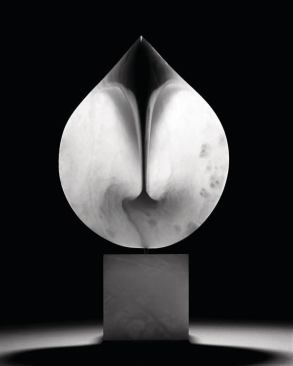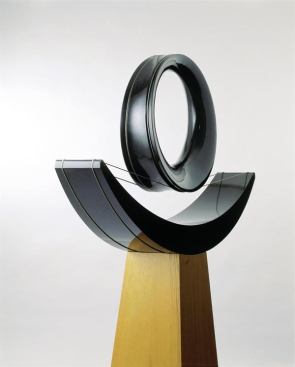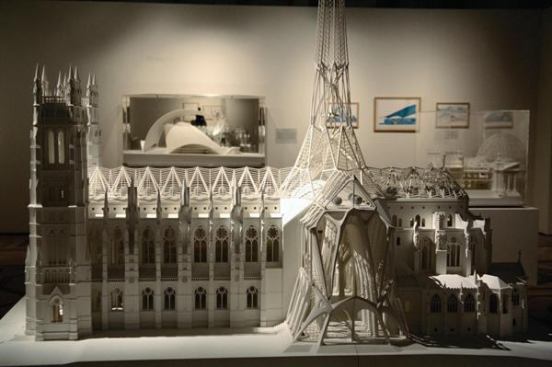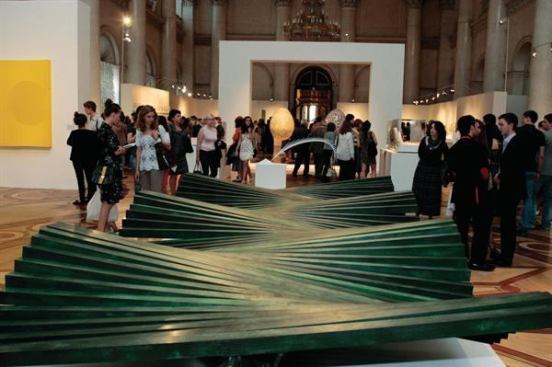Courtesy Santiago Calatrava LLC
“Pure Geometry,” a sculpture from Santiago Calatrava’s exh…
Placing Santiago Calatrava’s work inside Russia’s State Hermitage Museum—specifically, inside the Elizabethan Baroque–style Winter Palace, the seat of Russia’s czarist Empire—juxtaposes two radically different kinds of architecture. But what a pairing of panache and exuberance. For museum-goers, this unprecedented aesthetic union, between St. Petersburg’s ornately wrought Winter Palace and Calatrava’s structurally expressive civic projects, is a match made in heaven. For Calatrava’s critics, it may seem like the restoration of the czar.
Whatever you think of Calatrava’s work, you cannot help being impressed and perhaps seduced by the scope, aesthetic complexity, and extraordinary craftsmanship of the exquisite models installed in the Winter Palace’s grand Nicholas Hall. “Santiago Calatrava: the Quest for Movement” is a fitting first contemporary architecture retrospective for the Hermitage. (More are planned.) Indeed, the exhibit’s 105 models, sculptures, paintings, and drawings convincingly demonstrate that Calatrava, recipient of the AIA Gold Medal in 2005, is an artistic and technological polymath—architect, structural engineer, sculptor, painter.
Photographs in the exhibit catalog show that Calatrava’s railway stations, museums, pavilions, stadiums, and urban towers are all typically monumental in scale and located strategically on sites in or near cities, or, in the case of his bridges, spanning rivers in urban, suburban, and pastoral landscapes. But the exhibit itself does not illustrate context with photographs. Rather, visually and physically dynamic models of Calatrava’s built and unbuilt projects fill the galleries. None of the exquisite models, which can be illuminated and put into motion when visitors activate switches, were made at Calatrava’s Zurich workshop explicitly for the exhibition. Clients lent them.
Over an entire lifetime of practice, few architects are ever hired to design projects comparable to Calatrava’s in scope, budget, visual prominence, or aesthetic potential. During our conversation in St. Petersburg prior to the exhibit’s summer opening, Calatrava talked about his work and his process. He acknowledged that he works only for clients, periodically as a result of design competitions, who are strongly committed to acquiring a Calatrava because they love what he does and have the means to pay for it, just as clients hire Richard Meier, FAIA, or Frank Gehry, FAIA, because they admire their aesthetic brands and are willing to buy them. Yet—and this is what so distinguishes Calatrava from his peers—many of Calatrava’s clients are public or nonprofit organizations, including government and civic entities. He claims that, notwithstanding perceptions, most of his clients and the projects they sponsor have had “constrained” budgets. Constrained for Calatrava may mean “not unlimited.” For most architects, it means something different. Constrained for Calatrava could mean the Winter Palace.




